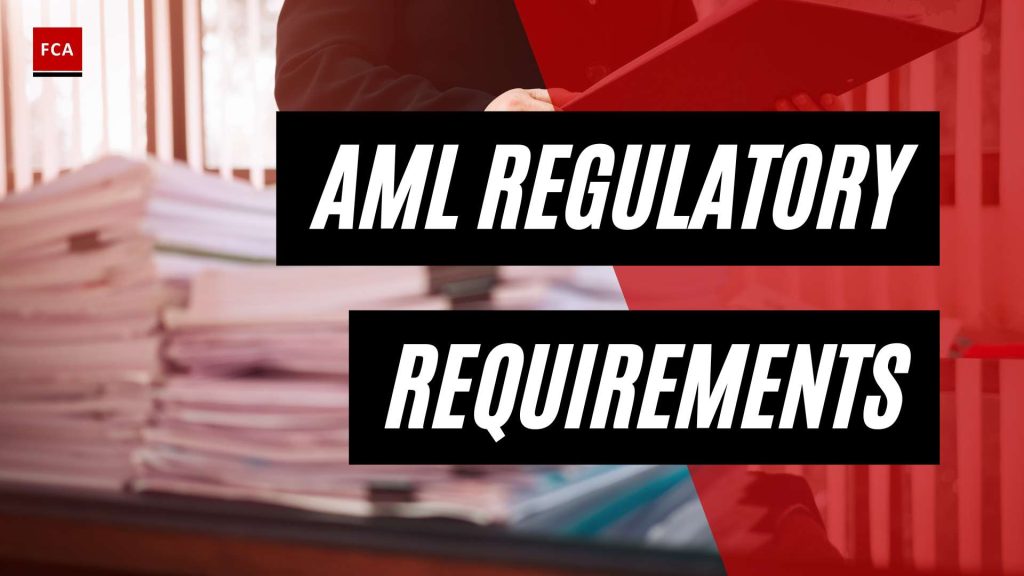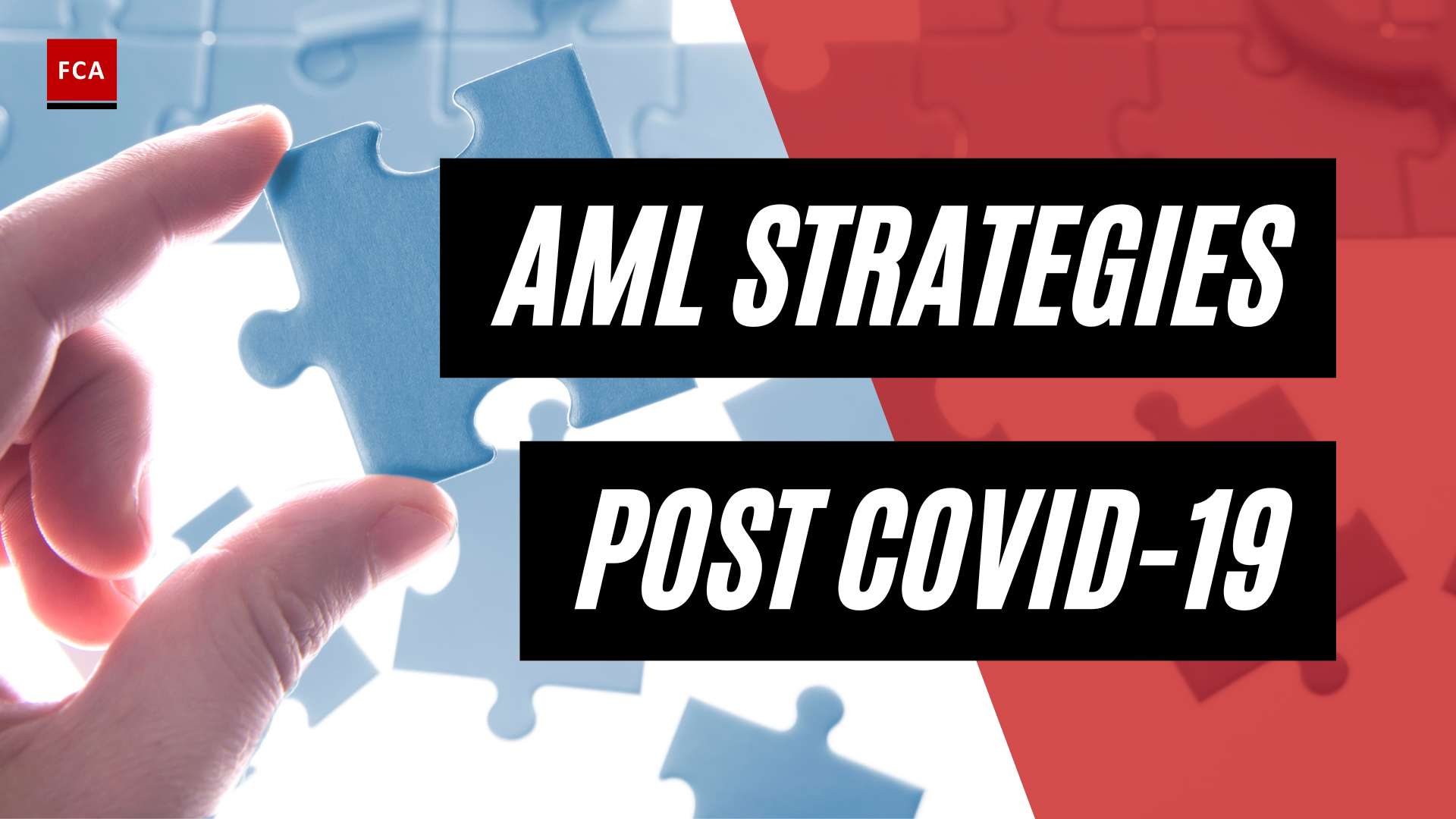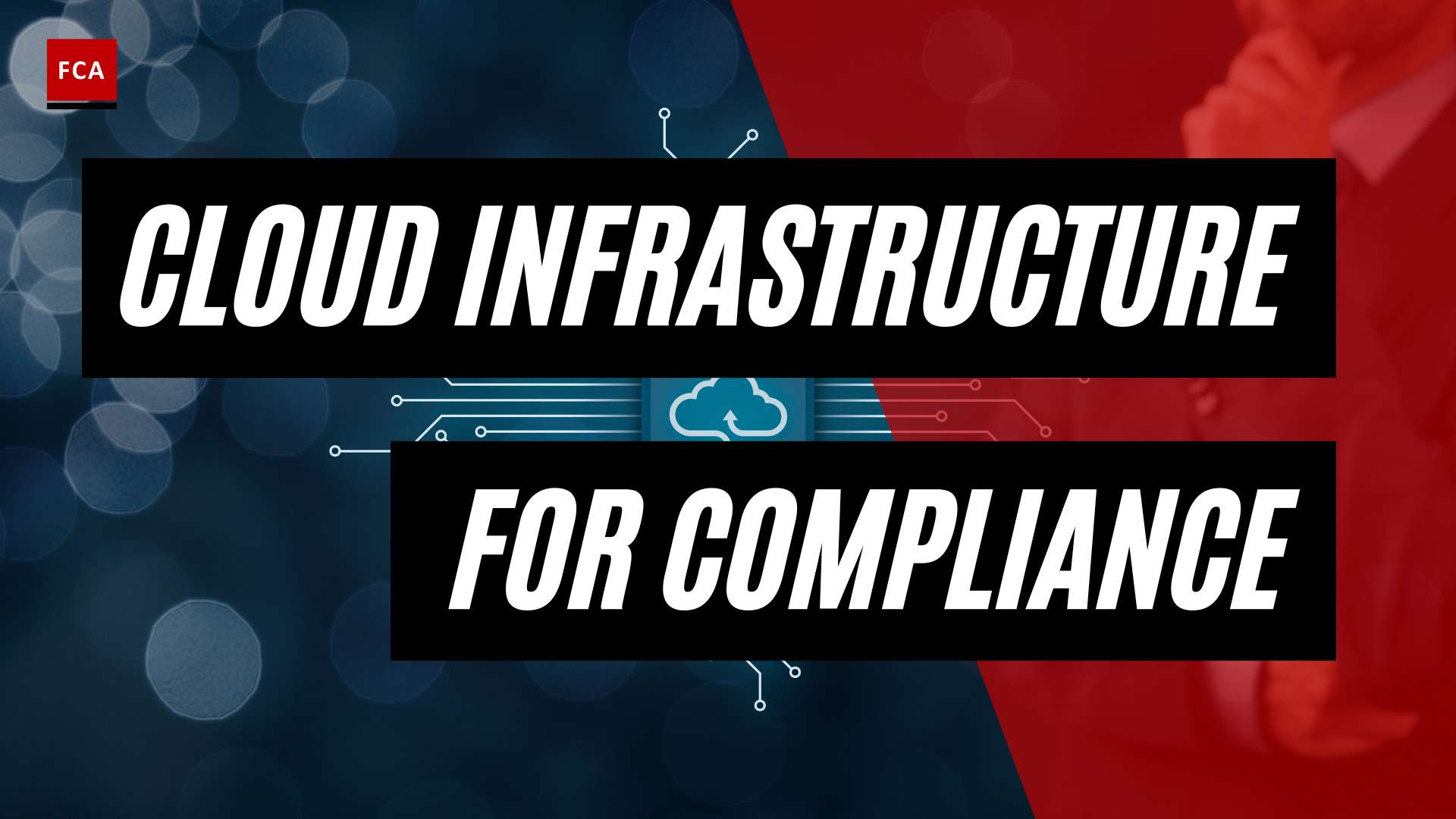Understanding AML Compliance
In the realm of financial institutions, Anti-Money Laundering (AML) compliance plays a vital role in safeguarding against illicit financial activities. Understanding the importance and components of AML compliance is crucial for professionals working in compliance, risk management, anti-money laundering, and anti-financial crime.
Importance of AML Compliance
AML compliance is of utmost importance to financial institutions and regulatory bodies alike. By adhering to AML regulations, institutions actively combat money laundering, terrorist financing, and other financial crimes. Compliance with AML regulations helps maintain the integrity of the financial system, protects institutions from reputational damage, and mitigates legal and financial risks.
Financial institutions are advised not to reduce spending on AML compliance, as having a robust AML program is crucial in today’s environment (Abrigo). The consequences of non-compliance can be severe, ranging from monetary penalties and legal repercussions to a loss of trust from customers and stakeholders.
Components of AML Compliance
AML compliance encompasses various components, each playing a significant role in detecting and preventing money laundering and other financial crimes. These components work together to create a comprehensive and effective AML program. The key components of AML compliance include:
1. Customer Due Diligence (CDD)
Customer Due Diligence is the process of verifying the identity of customers and assessing their potential risk for involvement in illicit activities. It involves gathering and verifying customer information, such as identification documents, and conducting enhanced due diligence for high-risk customers.
2. Ongoing Monitoring
Ongoing monitoring involves the continuous review of customer transactions and activities to identify any unusual or suspicious behavior. It helps detect patterns or trends that may indicate potential money laundering or other illicit activities. By monitoring customer transactions, financial institutions can promptly detect and report suspicious activities to the relevant authorities.
3. Transaction Monitoring
Transaction monitoring involves the systematic review and analysis of customer transactions to identify any suspicious or potentially illegal activities. It involves setting up monitoring systems that use advanced technologies to identify patterns, anomalies, and red flags in transactional data. Transaction monitoring helps institutions identify and investigate potentially suspicious activities in real-time.
4. Suspicious Activity Reporting
Suspicious Activity Reporting (SAR) involves the reporting of any suspicious transactions or activities to the appropriate regulatory authorities. Financial institutions are required to have processes in place to identify, investigate, and report suspicious activities promptly. SAR plays a crucial role in facilitating the sharing of information with law enforcement agencies and contributes to the overall fight against financial crimes.
To maintain an effective AML compliance program, financial institutions should regularly update their AML compliance checklist, adapt to regulatory changes, and stay informed about emerging financial crime trends. By leveraging tools, technologies, and outsourced AML expertise, institutions can enhance their AML compliance efforts and ensure the success of their compliance programs.
In the next sections, we will explore the tools and technologies used in AML compliance, the importance of employee training and awareness, and strategies for maintaining an effective AML compliance program.
AML Audit and Review
To ensure effective Anti-Money Laundering (AML) compliance, conducting regular audits and reviews is crucial. These processes play a vital role in assessing the effectiveness of an organization’s AML program and identifying any gaps or areas for improvement.
The Role of AML Audit
An AML audit is a systematic examination of an organization’s AML compliance program to evaluate its adequacy and effectiveness in preventing money laundering and other illicit financial activities. The audit helps to ensure that the organization is in compliance with regulatory requirements and industry best practices.
During an AML audit, the focus is on assessing the organization’s written policies, procedures, processes, and actual practices to determine if they align with regulatory guidelines and the organization’s ML/TF (Money Laundering/Terrorist Financing) and other illicit financial activity risk profile. The audit also evaluates the organization’s adherence to BSA regulatory requirements, as stated in 12 USC 1818(s) and 12 USC 1786(q).
The findings from the AML audit are documented in an AML audit report. These findings are essential for both the organization and regulatory authorities, as they provide insights into the organization’s compliance status and areas that require attention or improvement. It is crucial to discuss the audit findings with bank management and include them in the report of examination (ROE) or supervisory correspondence.
Conducting an AML Review
An AML review is a comprehensive examination of an organization’s AML compliance program to ensure its effectiveness and adherence to regulatory standards. The review process involves evaluating various components of the AML program, including customer due diligence (CDD), ongoing monitoring, transaction monitoring, and suspicious activity reporting.
The AML review checklist should cover the following aspects of the organization’s AML program:
-
Customer Due Diligence (CDD): Evaluate the organization’s processes for identifying and verifying customer identities, assessing customer risk, and conducting enhanced due diligence (EDD) for higher-risk customers.
-
Ongoing Monitoring: Assess the organization’s procedures for monitoring customer transactions and activities on an ongoing basis, including reviewing and updating customer information and conducting periodic risk assessments.
-
Transaction Monitoring: Review the organization’s transaction monitoring systems and processes to ensure they are effective in detecting and reporting potentially suspicious transactions. This includes evaluating the organization’s rules, parameters, and thresholds for transaction monitoring.
-
Suspicious Activity Reporting: Evaluate the organization’s policies and procedures for reporting suspicious activities to the appropriate regulatory authorities. This includes assessing the organization’s recordkeeping practices and the quality and timeliness of its suspicious activity reports (SARs).
By conducting regular AML reviews, organizations can identify areas of non-compliance or weaknesses in their AML programs. This allows them to take corrective actions, implement necessary improvements, and stay ahead of evolving regulatory requirements and financial crime trends.
Remember, an effective AML compliance program goes beyond written guidelines. Actual practices should align with these guidelines and correspond to the organization’s specific ML/TF and other illicit financial activity risk profile. By conducting thorough AML audits and reviews, organizations can ensure the integrity of their AML compliance programs and mitigate the risks associated with money laundering and other financial crimes.
Key Elements of AML Compliance
To ensure effective Anti-Money Laundering (AML) compliance, it is essential to focus on key elements that form the foundation of a robust AML program. These elements include Customer Due Diligence (CDD), Ongoing Monitoring, Transaction Monitoring, and Suspicious Activity Reporting.
Customer Due Diligence (CDD)
Customer Due Diligence (CDD) is a critical component of AML compliance. It involves verifying the identity of customers and assessing their risk level through Know Your Customer (KYC) procedures. By conducting thorough CDD, financial institutions can gather necessary information about their customers, including their identity, occupation, source of funds, and purpose of the business relationship. This information helps in identifying and mitigating potential money laundering risks. CDD should be performed at the onboarding stage and periodically throughout the customer relationship.
Ongoing Monitoring
Ongoing Monitoring is an integral part of an effective AML compliance program. It involves regularly reviewing and updating customer information and risk profiles to ensure compliance with regulations. By monitoring customer transactions, behavior, and activities, financial institutions can detect any unusual or suspicious patterns that may indicate potential money laundering or terrorist financing activities. Ongoing Monitoring enables institutions to promptly identify and respond to changes in customer risk profiles and take appropriate actions, such as conducting additional due diligence or filing suspicious activity reports.
Transaction Monitoring
Transaction Monitoring is a crucial element of AML compliance. It involves the systematic review and analysis of customer transactions to identify and report any suspicious or potentially illicit activity. Financial institutions use transaction monitoring systems to automatically detect patterns, trends, and anomalies in transactional data. These systems help to flag transactions that deviate from normal customer behavior or match predefined risk scenarios. By analyzing transaction data, institutions can identify potential money laundering activities and take appropriate actions, such as filing suspicious activity reports and conducting further investigations.
Suspicious Activity Reporting
Suspicious Activity Reporting plays a vital role in combating money laundering and other financial crimes. It involves identifying and reporting any transactions or activities that raise suspicions of money laundering or terrorist financing to the relevant authorities. Financial institutions are required to establish internal procedures for recognizing and reporting suspicious activities promptly. By filing suspicious activity reports, institutions contribute to the overall efforts in detecting and preventing financial crimes.
By incorporating these key elements into their AML compliance programs, financial institutions can enhance their ability to detect and prevent money laundering activities. It is important to note that AML compliance is an ongoing process, and institutions should regularly review and update their AML compliance checklist to adapt to regulatory changes and emerging financial crime trends.
For more information on AML compliance and other important aspects of AML programs, visit our article on AML compliance review.
Tools and Technologies for AML Compliance
To effectively combat money laundering and meet regulatory requirements, financial institutions rely on various tools and technologies as part of their AML compliance efforts. These tools enhance an institution’s ability to detect suspicious activities and comply with regulations. Let’s explore three key tools commonly used in AML compliance: transaction monitoring systems, customer due diligence software, and sanctions screening solutions.
Transaction Monitoring Systems
Transaction monitoring systems play a critical role in AML compliance by analyzing customer transactions and identifying potentially suspicious activities. These systems are designed to detect patterns, anomalies, and red flags that may indicate money laundering or other illicit financial activities. By monitoring large volumes of transactions in real-time or through batch processing, these systems can identify and generate alerts for further investigation.
Transaction monitoring systems employ advanced analytics and rules-based engines to analyze transactional data against predefined scenarios and risk profiles. The systems can be customized to the institution’s specific risk appetite and regulatory requirements. By leveraging these systems, financial institutions can better identify and mitigate the risks associated with money laundering and financial crime.
Customer Due Diligence Software
Customer Due Diligence (CDD) software is an essential tool for AML compliance, enabling financial institutions to ensure that they have a comprehensive understanding of their customers and their associated risks. CDD software automates the process of collecting, verifying, and assessing customer information, such as identification documents, business relationships, and sources of wealth.
By using CDD software, financial institutions can streamline and standardize their customer onboarding processes, making them more efficient and consistent. The software can perform risk assessments, assign risk ratings to customers, and trigger enhanced due diligence measures for high-risk individuals or entities. Additionally, CDD software helps institutions meet regulatory requirements related to customer identification, record-keeping, and ongoing monitoring.
Sanctions Screening Solutions
Sanctions screening solutions are vital for AML compliance as they help financial institutions identify and prevent transactions involving individuals, organizations, or countries subject to economic and trade sanctions. These solutions compare customer and transaction data against comprehensive watchlists provided by regulatory authorities, including government agencies and international sanction bodies.
Sanctions screening solutions employ sophisticated algorithms and data matching techniques to flag any potential matches between customer data and the watchlists. When a match is found, the system generates an alert for further investigation. By implementing effective sanctions screening solutions, financial institutions can ensure compliance with sanctions regulations and mitigate the risk of facilitating transactions with sanctioned parties.
By utilizing transaction monitoring systems, customer due diligence software, and sanctions screening solutions, financial institutions can strengthen their AML compliance programs and enhance their ability to detect and prevent money laundering and other illicit activities. These tools, in conjunction with robust internal processes and employee training, are essential components of a comprehensive AML compliance framework.
For more information on AML compliance and the importance of maintaining an effective program, refer to our articles on aml audit checklist and aml compliance review.
Employee Training and Awareness
To establish a strong anti-money laundering (AML) compliance program, training employees on AML policies and procedures is of utmost importance. Employees play a crucial role in preventing financial crimes, and their understanding of their responsibilities is key to the effectiveness of an organization’s AML program (Alessa).
Importance of AML Training
AML training ensures that employees are well-informed about the risks associated with money laundering and terrorist financing. It helps them recognize red flags and suspicious activities that may require further investigation. By providing comprehensive AML training, organizations can empower their employees to identify and report potential financial crimes.
Training should cover topics such as:
- Recognizing suspicious transactions and activities
- Understanding customer due diligence (CDD) requirements
- Knowing the laws, regulations, and internal policies related to AML compliance
- Identifying risks associated with different customer types and transactions
- Understanding the organization’s reporting obligations
Regularly updating AML training materials is crucial to keep employees informed about changes in regulations, emerging risks, and evolving trends in money laundering and terrorist financing. By investing in continuous education, organizations can enhance their AML compliance efforts and mitigate the risk of non-compliance.
Roles and Responsibilities of Employees
Each employee within an organization has a specific role to play in ensuring AML compliance. It is essential for employees to understand their responsibilities and how they contribute to the overall AML program.
Some common roles and responsibilities of employees include:
- Conducting customer due diligence (CDD) checks to verify customer identities and assess potential risks
- Monitoring customer transactions for any unusual or suspicious activities
- Reporting suspicious transactions or activities to the designated compliance officer or appropriate authorities
- Adhering to internal policies and procedures related to AML compliance
- Participating in ongoing AML training to stay up-to-date with regulations and best practices
By clearly defining and communicating these roles and responsibilities, organizations can foster a culture of compliance and ensure that everyone understands their obligations in preventing financial crimes.
In addition to training, organizations should establish mechanisms for ongoing communication and awareness-building. Regular updates, reminders, and discussions can reinforce the importance of AML compliance and help employees stay vigilant in their day-to-day activities.
By prioritizing employee training and awareness, organizations can strengthen their AML compliance program and effectively combat the risks associated with money laundering and terrorist financing.
Maintaining an Effective AML Compliance Program
To ensure the effectiveness and ongoing success of an Anti-Money Laundering (AML) compliance program, regular updates to the AML compliance checklist and the ability to adapt to regulatory changes and financial crime trends are essential.
Regular Updates to AML Compliance Checklist
A robust AML compliance program requires a comprehensive checklist that covers all key elements of AML compliance. This checklist should include components such as Customer Due Diligence (CDD), Ongoing Monitoring, Transaction Monitoring, and Suspicious Activity Reporting (Veriphy). Regular updates to the checklist are necessary to keep pace with evolving regulatory requirements and emerging financial crime risks.
Regulatory bodies continually refine AML regulations and guidelines to address the changing landscape of money laundering and terrorist financing. It is crucial for organizations to stay informed about these updates and incorporate them into their AML compliance checklist. This may involve revising policies, procedures, and risk assessment methodologies to ensure alignment with the latest regulatory standards. By regularly updating the checklist, organizations can enhance their ability to identify and mitigate potential AML risks.
Adapting to Regulatory Changes and Financial Crime Trends
Adapting to regulatory changes and financial crime trends is an ongoing challenge for organizations striving to maintain effective AML compliance. It is crucial to closely monitor regulatory updates, guidance, and industry best practices to stay ahead of evolving risks and ensure compliance. By doing so, organizations can proactively identify gaps in their AML compliance program and take appropriate measures to address them.
In addition to regulatory changes, organizations must also be vigilant in monitoring emerging financial crime trends. Criminals are constantly evolving their methods to exploit vulnerabilities and circumvent detection. By staying informed about emerging trends, organizations can adjust their AML compliance strategies and implement necessary controls to mitigate new risks.
To effectively adapt to regulatory changes and financial crime trends, organizations may consider engaging with industry associations, participating in relevant forums, and leveraging external resources. These measures can provide valuable insights and guidance to enhance the effectiveness of the AML compliance program.
By regularly updating the AML compliance checklist and adapting to regulatory changes and financial crime trends, organizations can maintain an effective AML compliance program. This proactive approach helps organizations stay compliant with regulations, protect their reputation, and mitigate the risk of financial crimes.
Ensuring AML Compliance Success
To ensure the success of an Anti-Money Laundering (AML) compliance program, financial institutions can leverage outsourced AML expertise and adopt technology solutions designed for AML compliance. These approaches can enhance an institution’s ability to detect and prevent money laundering activities, while also improving operational efficiency and reducing compliance risks.
Leveraging Outsourced AML Expertise
Outsourcing AML expertise can provide financial institutions with valuable support in managing and reporting on suspicious financial activity. AML experts can assist with various aspects of compliance, including alerts, cases, lookbacks, and more (Abrigo). By leveraging the knowledge and experience of these experts, institutions can enhance their AML programs, ensuring they remain effective and aligned with regulatory requirements.
Outsourcing allows institutions to tap into specialized skills and resources that may not be available in-house. It can also provide a fresh perspective on compliance challenges and help identify and address potential gaps or weaknesses in existing AML processes. Additionally, outsourcing assistance can be particularly beneficial during transitions, such as the implementation of the Current Expected Credit Loss (CECL) accounting standard (Abrigo).
Technology Adoption for AML Compliance
Technology plays a critical role in enhancing AML compliance efforts. Speeding up technology adoption is crucial for maximizing return on investment (ROI) in AML compliance programs, improving strategic planning, and identifying future growth and risks (Abrigo). By leveraging advanced tools and solutions, financial institutions can automate manual processes, streamline workflows, and improve the accuracy and efficiency of their AML compliance activities.
Key technology solutions for AML compliance include:
- Transaction Monitoring Systems: These systems use advanced algorithms and analytics to monitor and analyze customer transactions in real-time. They help detect and flag suspicious activities based on predefined rules and patterns.
- Customer Due Diligence Software: This software assists in gathering, verifying, and managing customer information, enabling institutions to perform effective customer due diligence (CDD) and Know Your Customer (KYC) procedures.
- Sanctions Screening Solutions: These solutions enable institutions to screen customer names and transactions against global sanctions lists and watchlists, helping identify potential matches and ensuring compliance with international sanctions regulations.
By incorporating these technologies into their AML compliance programs, institutions can enhance their ability to detect and prevent money laundering activities, minimize false positives, and improve overall compliance effectiveness.
To maintain an effective AML compliance program, it is important to regularly update the AML compliance review checklist (Alessa). This ensures that the checklist reflects changes in regulations, emerging financial crime trends, and the institution’s risk profile. By keeping the checklist dynamic and up to date, institutions can adapt to regulatory changes and emerging threats, which is crucial in the ever-evolving landscape of financial crime prevention.
By leveraging outsourced AML expertise and adopting technology solutions, financial institutions can strengthen their AML compliance efforts, mitigate risks, and contribute to a safer financial system. These approaches, combined with robust internal processes and employee training, form the foundation for a comprehensive and effective AML compliance program.
AML Audit and Review
To ensure the effectiveness and adherence to Anti-Money Laundering (AML) regulations, conducting an AML audit and review is crucial. This process allows organizations to assess their AML compliance program, identify areas for improvement, and mitigate potential risks. Let’s explore the role of an AML audit and the key steps involved in conducting a comprehensive AML review.
The Role of AML Audit
An AML audit serves as an independent and systematic evaluation of an organization’s AML compliance program. It helps to assess the effectiveness of internal controls, policies, and procedures in detecting and preventing money laundering activities. Additionally, an AML audit ensures that an organization is meeting regulatory requirements and industry best practices.
The objectives of an AML audit typically include:
- Evaluating the adequacy and effectiveness of AML policies and procedures.
- Assessing the organization’s compliance with applicable AML laws and regulations.
- Identifying gaps or weaknesses in the AML program.
- Recommending improvements to strengthen the AML compliance framework.
- Providing assurance to management and stakeholders regarding the organization’s AML efforts.
Conducting an AML Review
When conducting an AML review, organizations should follow a systematic and comprehensive approach to assess their AML compliance program. The review process typically involves the following key elements:
-
AML Compliance Checklist: Develop an AML compliance checklist that covers the essential components of an effective AML program. This checklist should include components such as Customer Due Diligence (CDD), Ongoing Monitoring, Transaction Monitoring, and Suspicious Activity Reporting (Veriphy). Refer to our article on AML audit checklist for more details.
-
Review Policies and Procedures: Evaluate the adequacy and effectiveness of the organization’s AML policies and procedures. Ensure they align with applicable laws, regulations, and industry guidelines. Assess if the policies are effectively communicated, implemented, and followed by employees.
-
Data and Documentation Analysis: Review customer records, transaction data, and documentation to assess compliance with CDD requirements and ongoing monitoring obligations. Analyze the organization’s transaction monitoring systems and tools for effectiveness in detecting suspicious activities.
-
Risk Assessment: Evaluate the organization’s risk assessment process to determine if it adequately identifies and addresses money laundering risks. Assess if the risk assessment is regularly updated to reflect changes in regulations and emerging financial crime trends (Alessa). Refer to our article on AML audit risk assessment for more details.
-
Employee Training and Awareness: Assess the training programs provided to employees regarding AML policies, procedures, and their role in preventing financial crimes. Ensure that employees are aware of their responsibilities and understand how to identify and report suspicious activities (Alessa).
-
Independent Audit: Consider engaging an independent third-party auditor or an internal audit team to conduct an objective evaluation of the AML compliance program. An external perspective can provide valuable insights and recommendations for improvement.
-
Reporting and Remediation: Document the findings of the AML review, including any identified weaknesses or areas for improvement. Develop a remediation plan to address the identified issues and ensure timely implementation of corrective measures. Prepare an AML audit report summarizing the review process, findings, and recommendations (Veriphy).
By conducting regular AML audits and reviews, organizations can enhance their AML compliance efforts, mitigate risks, and stay ahead of regulatory requirements. It is crucial to adapt the AML compliance program to reflect changes in regulations and emerging financial crime trends. Furthermore, organizations can consider leveraging outsourced AML expertise and adopting technology solutions to strengthen their AML compliance program (Alessa).








